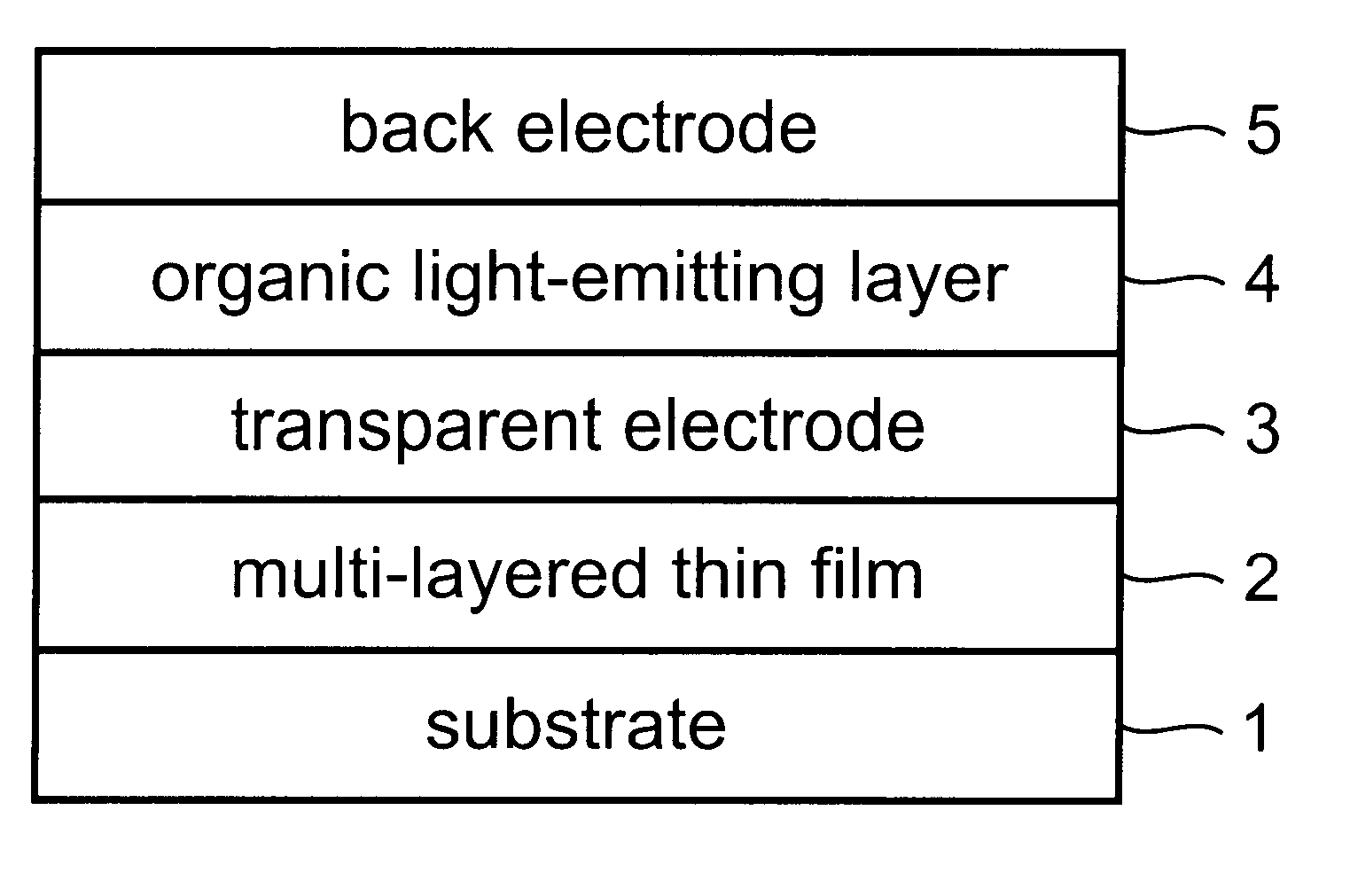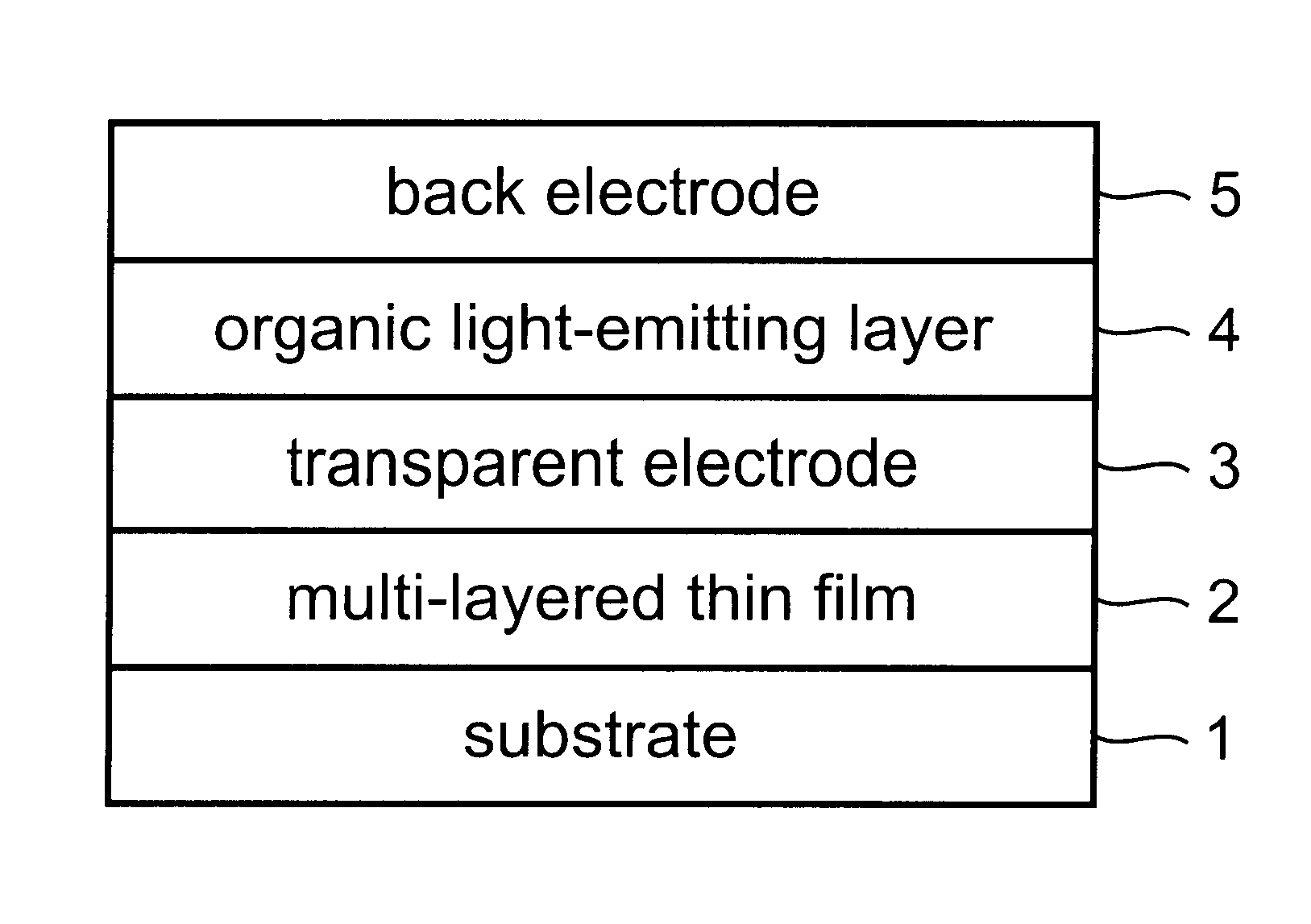Organic light-emitting device
a light-emitting device and micro-optical resonator technology, which is applied in the direction of discharge tube luminescnet screens, active medium materials, natural mineral layered products, etc., can solve the problems of poor light-emitting characteristics of organic light-emitting devices comprising electrodes, remarkable light loss, and poor light-emitting characteristics
- Summary
- Abstract
- Description
- Claims
- Application Information
AI Technical Summary
Problems solved by technology
Method used
Image
Examples
Embodiment Construction
The micro-optical resonator type organic light-emitting device of the present invention will be explained in further detail by the following examples without intention of restricting the scope of the present invention defined by the claims attached hereto.
1. Preparation of Laminate Composed of Substrate and Multi-Layered Thin Film
A glass substrate of 5.0 cm.times.5.0 cm in size was washed with ultrasonic wave in a mixture of acetone, Semico Clean (Furuuchi Kagaku Co.) and isopropyl alcohol (PA). The substrate was further washed by boiling in IPA and treated with UV / O.sub.3 washing. This washed substrate was then placed in an EB metallizing chamber, and a multi-layered thin film, which has the reflectivity of 60% against each light in the wavelength range 1 (530 to 550 nm), the wavelength range 2 (590 to 640 nm) and the wavelength range 3 (660 to 780 nm), was disposed thereon, to obtain the comparative laminate A composed of the substrate and the multi-layered thin film.
The above ste...
PUM
| Property | Measurement | Unit |
|---|---|---|
| reflectivity | aaaaa | aaaaa |
| reflectivity | aaaaa | aaaaa |
| thickness | aaaaa | aaaaa |
Abstract
Description
Claims
Application Information
 Login to View More
Login to View More - R&D
- Intellectual Property
- Life Sciences
- Materials
- Tech Scout
- Unparalleled Data Quality
- Higher Quality Content
- 60% Fewer Hallucinations
Browse by: Latest US Patents, China's latest patents, Technical Efficacy Thesaurus, Application Domain, Technology Topic, Popular Technical Reports.
© 2025 PatSnap. All rights reserved.Legal|Privacy policy|Modern Slavery Act Transparency Statement|Sitemap|About US| Contact US: help@patsnap.com



